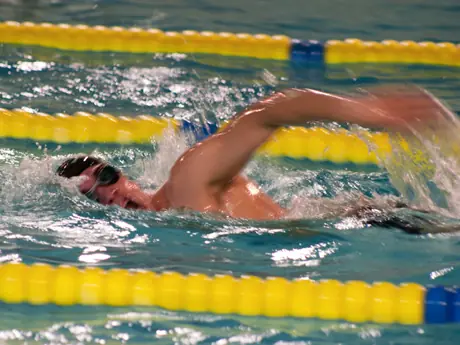
Strong does not mean bulky, big, or even all that muscular. Swimming "strong" is the ability to nail shorter, harder sets. Simply put, a strong swimmer has a powerful stroke.
The unique swimmer's body of Phelps, Lochte, and Yang is narrow hips, big back, wide shoulders. That doesn't come from lifting weights as much as it comes from repetition. Those are muscles of function, not muscles of vanity.
Strong, powerful swimming means putting a lot of force into the pull phase of the stroke. Strong swimming will allow you to cut precious strokes off your total count, which will save you energy, which will allow you to gap the runners on the bike. You should do one half to one full strong set each week. This is the least important of the first three S's (smooth, strong, sustainable).
More: 4 Steps to a Smooth Swim
Sets and Timing
Sets will be described in this format: 5 x 100 at 1:30. Translation: Do five 100-yard swims (default to freestyle unless otherwise noted) in one minute and thirty seconds. This means that, for this particular set, your timing would look like this:
- 1 - leave at 0:00
- 2 - leave at 1:30
- 3 - leave at 3:00
- 4 - leave at 4:30
- 5 - leave at 6:00
This type of timing means that as you get tired, your rest time decreases, forcing you to do the same amount of work with less recovery, which will help you get stronger. Beginner swimmers may struggle to find a happy time standard. You should be able to make 10 x 100 with plenty of rest in the time standard you choose.
Experimentation will be needed. By 100s eight and nine you may only be getting five seconds of rest. This is good. It will make you physically and mentally tougher.
More: Decoding a Swim Practice
Your 100 time standard then translates to all other distances. If you are doing your 100s on the 2:00, then your 200s will be on the 4:00, 300s on the 6:00, 400s on the 8:00, and 500s on the 10:00. Having this baseline will help you gauge progress and see where you when evaluating race times.
Please remember that open water swim times are normally slower than pool times. Current, waves and the press of other bodies slow you down.
Another option for beginners is to give yourself a set amount of rest between each effort. So you can do 10 x 100 with 20 seconds rest. This is a good place for beginners to start, since you cannot fail to meet a time standard and it might be less discouraging.
It's a good idea to use active rest between sets. Active rest includes an easy 50- or 100-yard swim. Active rest is better than passive rest (hanging on the wall) because it speeds recovery.
To prepare for a 1.5K (1640 yards) swim your workouts should hover around the 1700-yard mark. Strong workouts might be slightly shorter and may include smooth work as active rest. Sustainable workouts will be slightly longer. Harder, main sets should go towards the front of the workout, after a warm-up of 200 to 500 yards.
More: Dave Scott's Guide to Swimming Form
Strong Set #1
- 10 x 100 – Sustainable time
- Total: 1,000 yards
Note: You want to make the 100s comfortable for the first few, and by the end really be struggling. It is not uncommon to get only 3 seconds rest with a strong set. As stated above, that will make you mentally and physically tougher. This is a bread-and-butter type set. You can add smooth drills to it, but note that turns it from a strong set into a smooth set. This is not a problem as long as your goals match your work.
Strong Set #2
- 10-15 x 50 – Sustainable time
- Total: 500/750yds
Note: This is one of two times 50s will be suggested. In general, do not fill workouts with 50s; they won't truly prepare a swimmer for a mile. But as far as creating a deep anaerobic hole to climb out of, it's hard to beat them. Plus, while a 100 might be intimidating to a beginner swimmer, 50s don't seem so bad, but every single 50 should be as hard as possible.
- 1
- of
- 2
Get ACTIVE on the Go


Meet Mobile
Swim smarter: heats, lane assignments and real-time results in the palm of your hand.
Available for iOS | Android
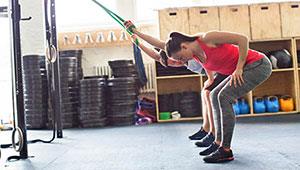

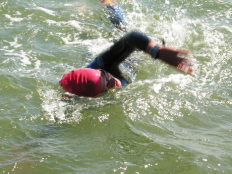
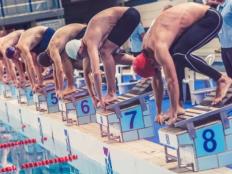
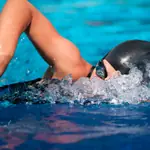


Discuss This Article